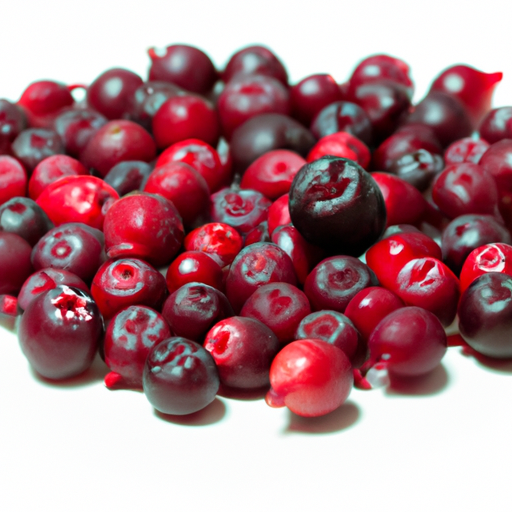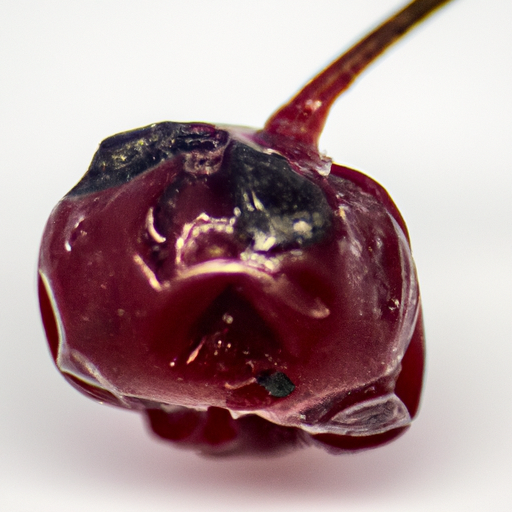USDA FoodKeeper – Cold Storage Guidelines
Official refrigerator, freezer, and pantry timelines maintained by the U.S. Department of Agriculture.
Visit USDA FoodKeeperBursting with flavor, these unique fruits offer a delightful mix of sweetness and tartness, perfect for enhancing your culinary creations. To enjoy their vibrant taste safely, store them in the fridge and keep an eye on their shelf life of about five days. Just remember, even after they expire, they can remain safe for a day, but always trust your senses!
Deerberry may remain safe to consume after its expiration date if it has been stored correctly at the proper temperature and shows no signs of spoilage. However, risk increases over time, especially if storage conditions were not optimal.
Storage timeline guidance: Some food safety sources suggest that deerberry, when stored properly at the correct temperature and showing no spoilage signs, may remain usable for approximately 1 day after its expiration date.
Important: This is not a guarantee of safety. Food safety depends on many factors including storage temperature, handling, initial freshness, and contamination risk. Always inspect food carefully for spoilage signs (odor, texture, color changes) before consuming. When in doubt, discard it to avoid foodborne illness.


Fridge
40°F (4°C)
Refrigerate in a breathable container
Proper airflow and humidity control can extend produce freshness. Using produce storage containers (Amazon) in the refrigerator helps regulate moisture and slow spoilage.
5 days
180 days
Mold growth, mushy texture
Make jams, jellies, or pies
Blueberries
Hey there! So, let's chat about expiration dates versus best quality when it comes to Deerberry. Expiration dates are more about safety than quality. They indicate the last day that the manufacturer guarantees the product will be at its peak quality. It's generally safe to consume Deerberry before the expiration date. After that date, there may be a risk of spoilage, so it's best to avoid eating it. On the other hand, the "best quality" or "best by" date refers to the period during which the Deerberry will be at its freshest and tastiest. While it's safe to eat Deerberry past this date, the quality may decline in terms of taste, texture, or color. For me, I usually follow the expiration date for safety reasons. If the Deerberry is past its best quality date but looks and smells fine, I might still give it a try, especially if I plan to use it in a cooked dish where the slight decline in quality won't be as noticeable.
To determine if Deerberry has gone bad, look for any signs of mold or discoloration on the surface. Check for a sour or off-smelling odor, which indicates spoilage. Lastly, feel the texture - if it feels slimy or mushy, it is best to discard the Deerberry to avoid any foodborne illness.
Hey there! Let's talk about food safety when it comes to Deerberry. While Deerberries are delicious and healthy, just like any other food, there are some risks to be aware of when it comes to foodborne illnesses. One major risk with Deerberries or any other berries is contamination from bacteria like Salmonella or E. coli. Symptoms of foodborne illness can range from stomach cramps to fever and vomiting. So, it's crucial to handle and store Deerberries properly to stay safe. To keep your Deerberries safe to eat, make sure to wash them thoroughly before consuming, especially if you're eating them raw. Store them in the fridge and consume them within a few days to prevent any bacterial growth. If you're using Deerberries in recipes that require cooking, make sure they are cooked thoroughly to kill any harmful bacteria. It's all about being mindful and taking simple precautions to enjoy your Deerberries without any worries. Stay safe and happy eating!
Hey there! Storing Deerberry effectively can help you enjoy this delicious fruit for longer. To keep them fresh, store Deerberries in a shallow container lined with paper towels to absorb excess moisture. Make sure to remove any spoiled berries to prevent them from spreading. If you want to enjoy Deerberries throughout the year, consider freezing them. Simply spread them out on a baking sheet, freeze them individually, then transfer to a freezer-safe bag. This way, you can easily grab a handful for smoothies or baking whenever you want. Another pro tip is to use a vacuum sealer to store Deerberries. This method removes air from the packaging, keeping the berries fresh for an extended period. Personally, I love making Deerberry jam to enjoy their flavor year-round. It's a great way to preserve their goodness and have a tasty spread for toast or desserts. Remember, the key to storing Deerberries is to keep them dry and away from moisture to prevent mold growth. Happy storing and savoring those delicious Deerberries!
Hey there! Let me tell you about one of my favorite wild berries - Deerberry! Did you know that Deerberry, also known as Vaccinium stamineum, is a native species to North America? It's a small, dark blue berry that grows on shrubs in the wild. One cool thing about Deerberries is that they have a long history of being used by Native American tribes for both food and medicine. Some tribes used them to make sweet treats like jams and pies, while others used them for their supposed medicinal properties. Interestingly, Deerberries got their name because deer are known to graze on the shrubs where these berries grow. It's like a little natural snack for the wildlife! If you ever get the chance to try Deerberries, be prepared for a unique taste that's a bit tart with a hint of sweetness. They're not as common in grocery stores as other berries, but if you come across them in the wild or at a farmer's market, definitely give them a try for a taste of North American history and culture!
Deerberry should not be left out at room temperature for more than 2 hours to prevent bacterial growth and spoilage. If it has been exposed for longer, it's safer to discard it.
Deerberry typically has a shelf life of 5 days in the fridge. If refrigerated for 6 days, it may still be safe to consume within 1 day past the expiry. Check for any signs of mold, off smells, or changes in texture before eating.
The type of container can impact Deerberry's shelf life. Opt for airtight containers to prolong freshness. Plastic containers or resealable bags work well to maintain moisture levels and prevent spoilage.
Still not sure if it's safe?
Our Food Expiration & Storage Quick Guide helps you decide quickly — with clear keep-or-discard rules for the most common foods.
Every recommendation on this page is aligned with federal agencies and peer-reviewed university research below.
Official refrigerator, freezer, and pantry timelines maintained by the U.S. Department of Agriculture.
Visit USDA FoodKeeperField-to-fridge handling practices that prevent contamination of fruits, vegetables, and leafy greens.
Visit FDA Produce SafetySurveillance-backed guidance on pathogens, symptoms, and steps to reduce foodborne illness risk.
Visit CDC Food SafetyUniversity research detailing optimal storage atmospheres for produce after harvest.
Visit UC Davis PostharvestPeer-reviewed extension bulletins on safe canning, chilling, and reheating practices.
Visit Penn State ExtensionNeed deeper reading? Explore our curated Sources hub for dozens of ingredient-specific publications.
Reviewed by the Can I Eat Expired Editorial Team, using food safety guidance from the USDA, FDA, CDC, and university extension programs.
Dairy Products
View expiration date and storage guide →
Beverages
View expiration date and storage guide →
Cooking Ingredients
View expiration date and storage guide →
Beverages
View expiration date and storage guide →
Ready-to-Eat Meals
View expiration date and storage guide →
Dairy Products
View expiration date and storage guide →
Breakfast Foods
View expiration date and storage guide →
Dairy Products
View expiration date and storage guide →
Dairy Products
View expiration date and storage guide →
Important: These are general guidelines based on authoritative sources listed above. Always use your best judgment and when in doubt, throw it out. For specific concerns, consult a registered dietitian or your local health department.
Disclosure: As an Amazon Associate, we earn from qualifying purchases. This helps support our site and allows us to continue providing free food safety information.